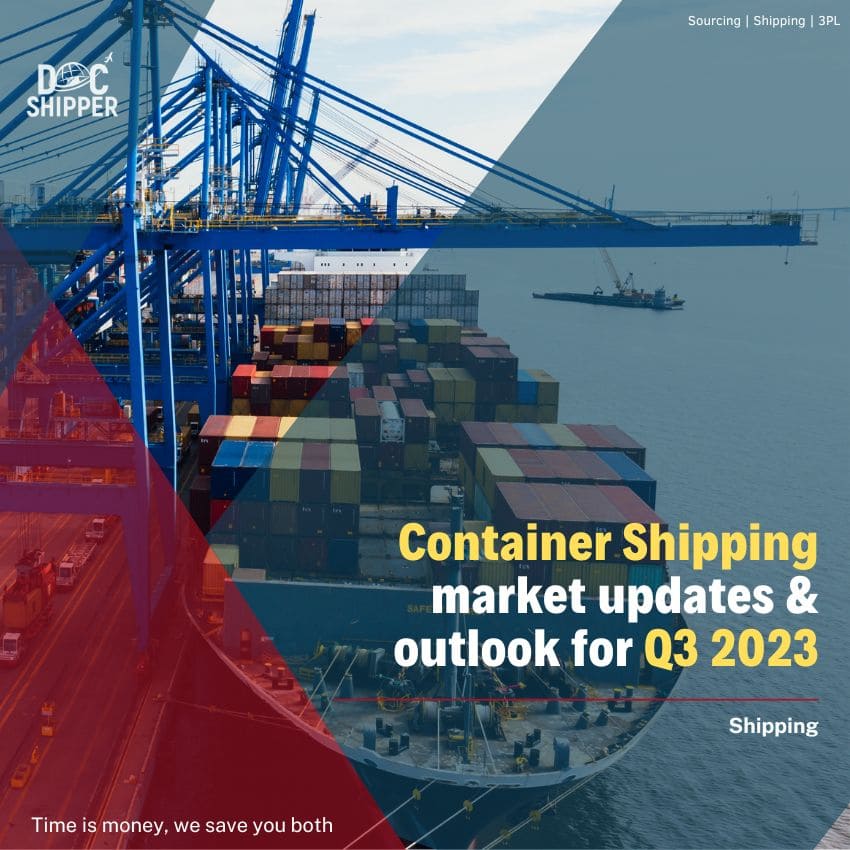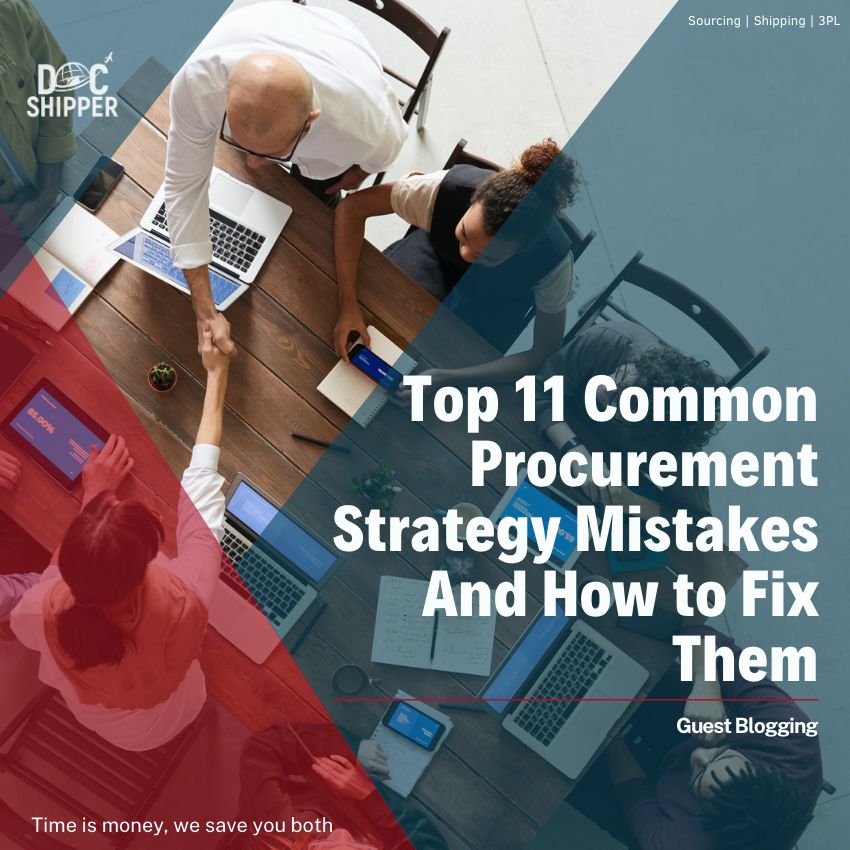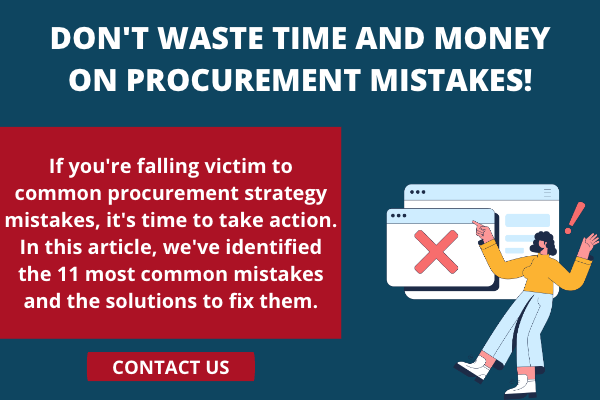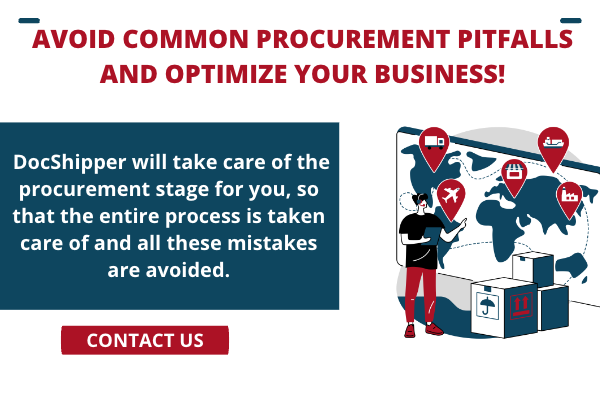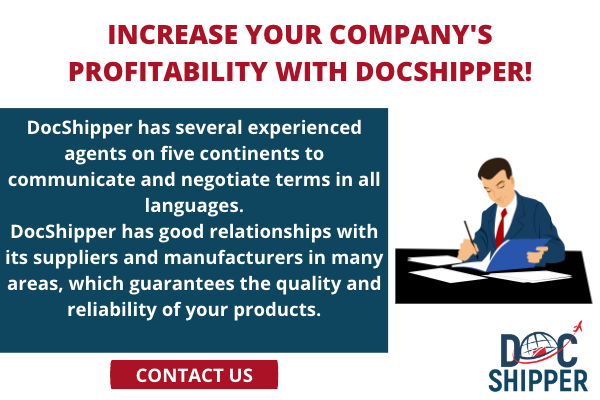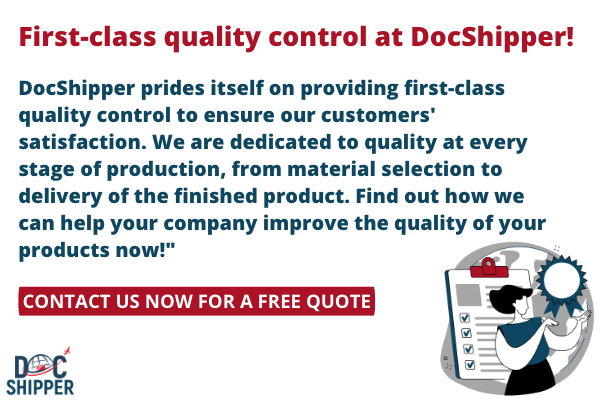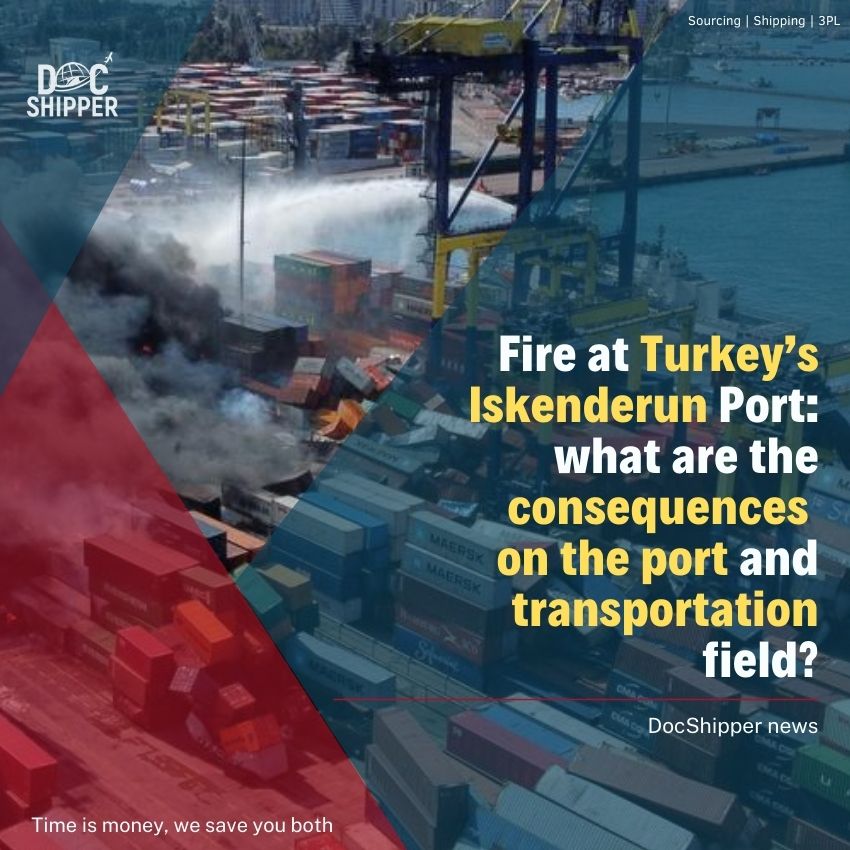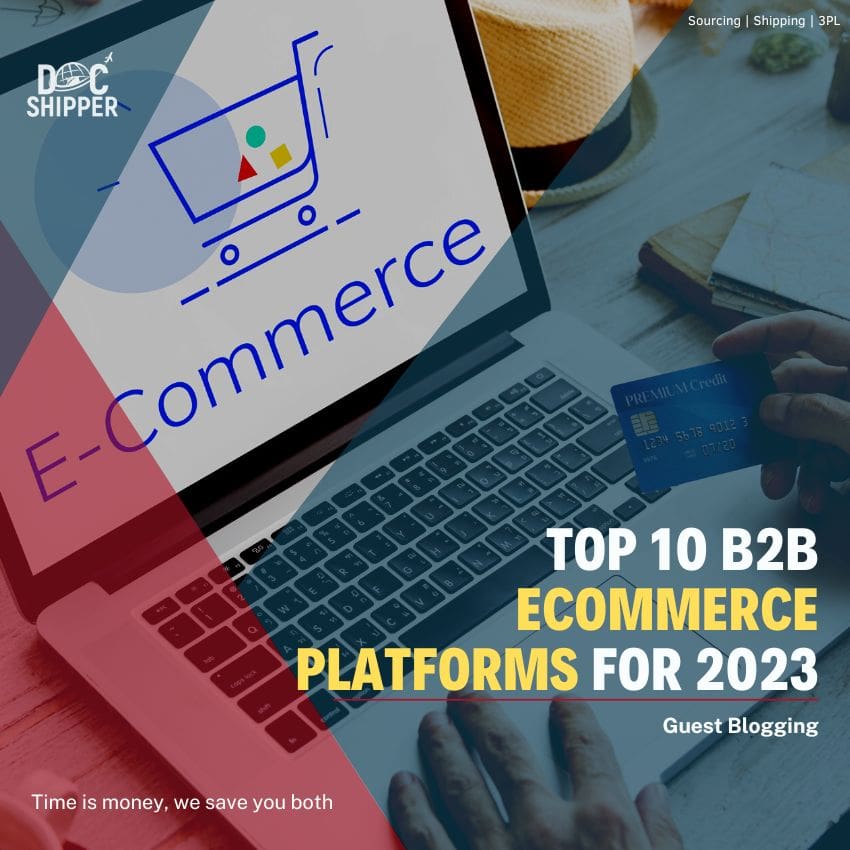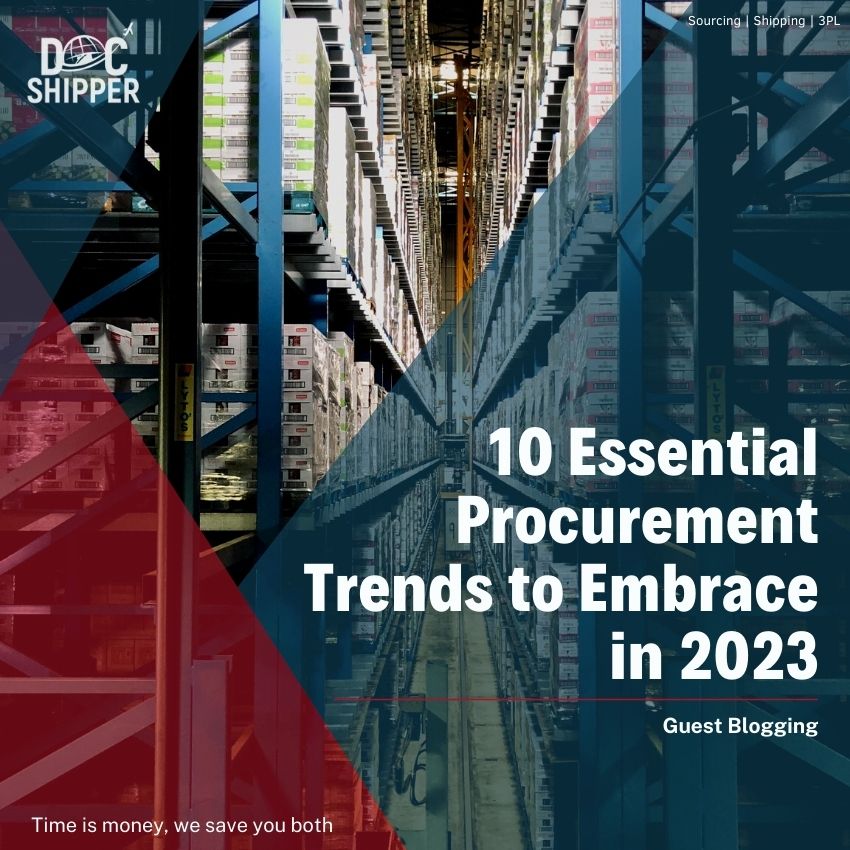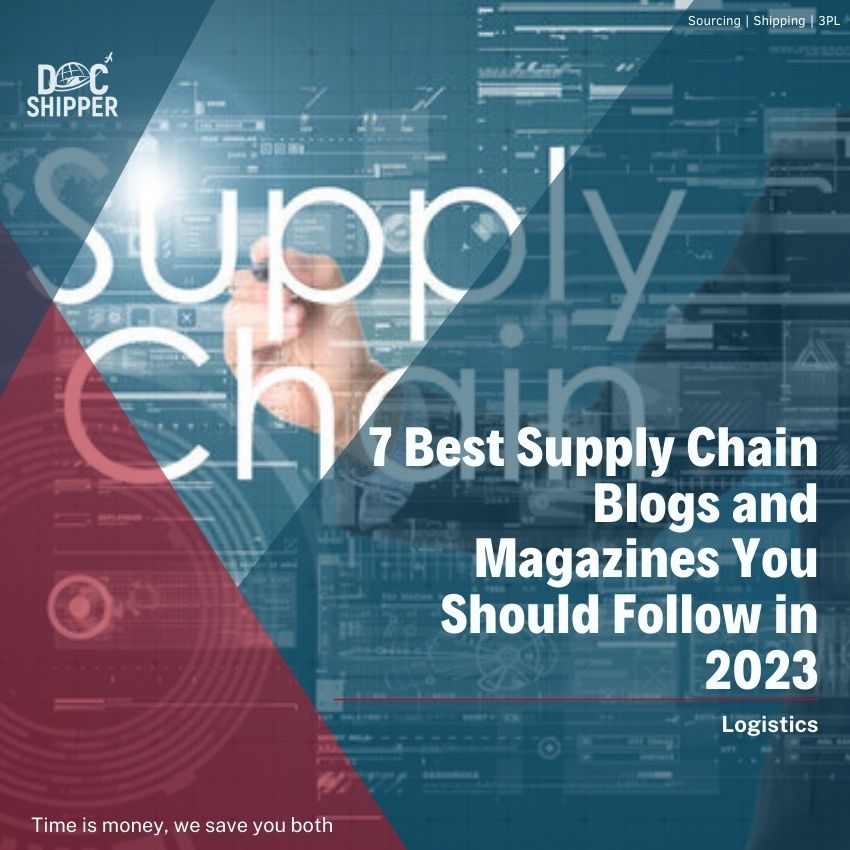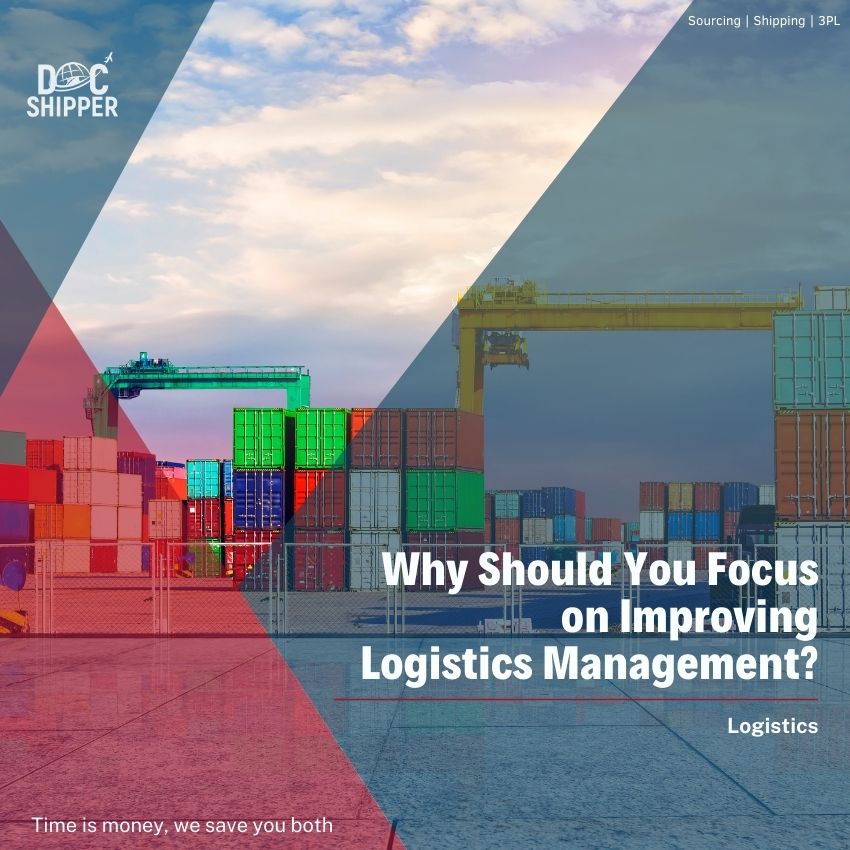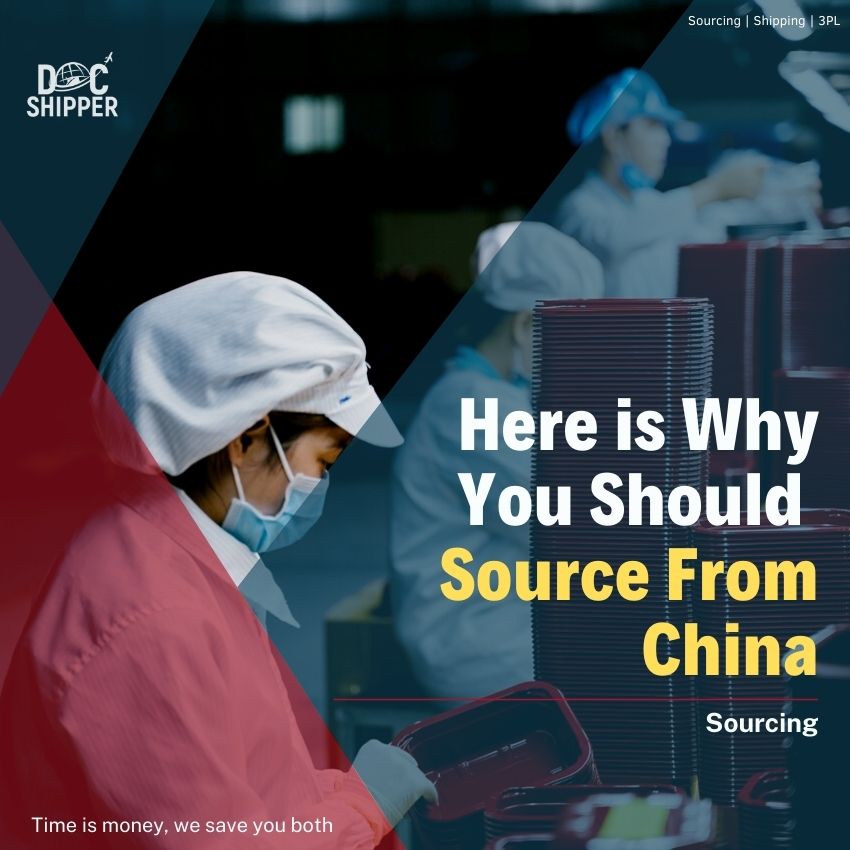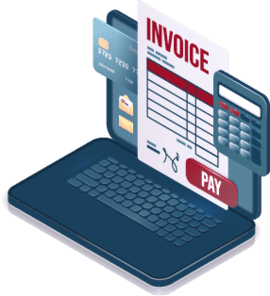The logistics industry is an ever-evolving sector that plays a vital role in connecting businesses and consumers across the globe.
From the movement of goods to the management of supply chains, logistics encompasses a web of activities that ensure the seamless flow of products and materials.
Staying ahead of the curve and understanding the market trends and forecasts shaping the logistics industry are crucial for businesses to thrive.
To bring it all together, let’s walk you through the future by discussing market forecasts and current trends in the logistics industry.
Let DocShipper manage your shipping requirements abroad.
International cargo shipping doesn't have to be an impossible task. You can relax knowing that your shipments are in good hands with DocShipper.
All the specifics, including paperwork and logistics, will be handled by our knowledgeable agents, freeing you up to concentrate on running your business.
Trends in 2023 for the logistics industry

In 2023, the logistics industry is experiencing a transformative wave of trends that are reshaping the way goods are transported, stored, and delivered.
Rapid advancements in technology, changing consumer preferences, and evolving global trade dynamics are driving these trends to propel the industry forward.
Logistics companies are adapting to meet the demands of an increasingly interconnected world where speed, efficiency, and sustainability are crucial for success.
These trends are not only shaping the present state of the logistics industry but also setting the stage for a future of enhanced connectivity, streamlined operations, and innovative solutions.
Let’s take a closer look at the trends within the logistics industry in 2023.
Automation and robotics in logistics
Automation and robotics have revolutionized various industries, and the logistics sector is no exception. From automated warehouses and robotic picking systems to the use of autonomous delivery vehicles, technology is reshaping logistics operations, driving enhanced efficiency and cost-effectiveness.
One key benefit of automation and robotics in logistics is increased productivity. Automated systems can handle repetitive tasks with greater speed and accuracy, minimizing human error and reducing processing times. This allows companies to streamline their operations, improve order fulfillment, and meet customer demands more effectively.
Sustainable logistics practices
As environmental concerns grow, sustainability has become a critical focus for the logistics industry. One significant trend in 2023 is the adoption of green logistics strategies. Companies are actively seeking ways to minimize their carbon footprint by optimizing route planning, consolidating shipments, and implementing energy-efficient practices. This includes using alternative fuels such as hybrid, hydrogen-powered, or electric trucks, as well as investing in renewable energy sources for warehouses and distribution centers.
Eco-friendly packaging solutions are also gaining traction. Businesses are exploring materials that are recyclable, biodegradable, or made from sustainable sources. By reducing packaging waste and using more environmentally friendly options, companies can contribute to a greener supply chain.
Data analytics and supply chain visibility
Data analytics and supply chain visibility have become indispensable tools for logistics professionals. The ability to gather and analyze vast amounts of information provides companies with valuable insights that can drive informed decision-making and optimize supply chain operations.
By leveraging advanced analytics technologies and supply chain management systems, businesses can gain real-time visibility into their operations. This enables them to track inventory levels, monitor demand patterns, identify bottlenecks, and make proactive adjustments to improve overall efficiency.
The advent of technologies like Internet of Things (IoT) devices, sensors, and artificial intelligence (AI) has further propelled the capabilities of data analytics in logistics. These technologies enable the collection of granular data points throughout the supply chain, allowing for more accurate demand forecasting, predictive maintenance, and optimized routing.
Last-mile delivery innovations
Last-mile delivery, which refers to the final leg of the logistics journey from the distribution center to the end customer, presents unique challenges and opportunities for innovation.
Crowdsourced delivery models have gained traction, leveraging the power of the sharing economy and utilizing local individuals to fulfill deliveries. This approach enables faster and more flexible delivery options, especially in urban areas.
Another key innovation in last-mile delivery is the integration of smart lockers and delivery hubs. These convenient pickup locations allow customers to retrieve their packages at a time that suits them best, reducing the need for multiple delivery attempts and minimizing the environmental impact of failed deliveries.
Experience top-notch road freight solutions with DocShipper:
We offer reliable and secure road freight services that are tailored to your needs. With timely deliveries and competitive rates, we ensure cost-effective shipping without compromising quality.
Trust us to handle road transportations of any size or distance, providing efficient solutions for your logistics challenges. contact us right now!
Market forecasts for 2030 in the logistics industry
The logistics industry is evolving at a rapid pace, driven by various factors that shape its future trajectory. Let’s explore 10 market forecasts and take a look into the future of the logistics industry.
- Integration of big data analytics and predictive analytics: Big data analytics and predictive analytics will become essential tools for logistics companies. By harnessing large volumes of data, companies can optimize operations, identify trends, and make data-driven decisions. Predictive analytics will enable proactive maintenance, demand forecasting, and route optimization, resulting in improved efficiency and cost savings.
- Integration of augmented reality (AR) and virtual reality (VR): Augmented reality and virtual reality technologies will find applications in logistics, enhancing warehouse operations, training simulations, and remote collaboration. These immersive technologies will improve efficiency, reduce errors, and optimize workflows.
- Shift towards digital supply chain networks: Digital supply chain networks will gain prominence as companies seek greater agility, transparency, and collaboration. These networks, powered by cloud-based platforms, blockchain technology, and real-time data exchange, will enable seamless communication and coordination between suppliers, manufacturers, distributors, and customers, resulting in streamlined operations and improved customer satisfaction.
- Increased focus on sustainability: Environmental concerns will drive the adoption of sustainable logistics practices. Companies will seek to minimize their carbon footprint by optimizing routes, using alternative fuels, and implementing eco-friendly packaging solutions.
- Integration of AI and ML: Machine learning and artificial intelligence will revolutionize logistics operations by enabling advanced analytics, demand forecasting, route optimization, and real-time visibility. These technologies will empower companies to make data-driven decisions and enhance supply chain efficiency.
- Growth of urban logistics solutions: With the rise of urbanization and last-mile delivery challenges in densely populated areas, the logistics industry will witness the growth of innovative urban logistics solutions. These may include micro-fulfillment centers, smart lockers, and collaborative delivery models.
- Emergence of blockchain in supply chain management: Blockchain technology has the potential to transform supply chain management by enhancing transparency, security, and traceability. Logistics providers will leverage blockchain to streamline processes, track goods, and facilitate seamless collaboration among stakeholders.
- Increased focus on risk management and resilience: The global pandemic has highlighted the importance of risk management and supply chain resilience. Companies will invest in technologies and strategies to mitigate risks, diversify sourcing, and enhance business continuity.
- Integration of the Internet of Things (IoT) in Logistics: The Internet of Things will enable real-time tracking, monitoring, and optimization of logistics operations. IoT-enabled sensors and devices will provide valuable data on shipment conditions, asset utilization, and predictive maintenance.
- Shift towards digital freight platforms: Digital freight platforms will gain prominence as they connect shippers and carriers, optimize freight matching, and enhance visibility and transparency. These platforms will simplify the logistics process, improve efficiency, and drive collaboration in the industry.
By considering these market forecasts and understanding the future outlook of the logistics industry, businesses can proactively adapt their strategies, invest in emerging technologies, and seize growth opportunities.
The key lies in staying informed, embracing innovation, and leveraging the transformative power of technology to thrive in this dynamic landscape
What’s next?
The logistics industry is on a continuous journey of transformation, fueled by evolving market trends and the integration of emerging technologies. As businesses look to the future, it is crucial to stay informed and adapt to the changing landscape.
As the industry evolves, it is essential for logistics professionals to stay proactive, continuously monitor market trends, and adopt agile strategies to stay ahead. By doing so, businesses can position themselves for success and drive the future of the logistics industry.
The future is bright, and with the right mindset and strategies, the possibilities are endless.
Streamline Your Logistics with DocShipper's logistics services! :
Need a reliable freight forwarder? Look no further! Our trained professionals are here to assist you every step of the way.
Contact us now to optimize your logistics journey.
FAQ |Logistics Industry Analysis: Trends, Forecast [2023 - 2024]
How is blockchain technology expected to revolutionize supply chain management in the logistics industry?
Blockchain technology is poised to revolutionize supply chain management in the logistics industry by providing a transparent and immutable ledger for tracking goods, reducing fraud and counterfeiting, enhancing real-time visibility, and automating trust through smart contracts. This innovation enables secure, decentralized data sharing among stakeholders, streamlining processes, improving traceability, and ultimately increasing efficiency, reliability, and accountability across the supply chain.
What are the key trends shaping the logistics industry in 2023?
In 2023, key trends shaping the logistics industry include an increased focus on sustainability and eco-friendly practices, accelerated adoption of advanced technologies like AI and IoT for real-time tracking and optimization, a growing emphasis on last-mile delivery solutions to meet evolving consumer expectations, and the continued integration of data analytics for predictive insights, enhancing operational efficiency and customer satisfaction.
How is automation and robotics influencing logistics operations in 2023?
In 2023, automation and robotics are significantly influencing logistics operations by enabling efficient and precise tasks such as sorting, picking, packing, and even last-mile delivery. Robotic systems are being integrated into warehouses and distribution centers, enhancing speed and accuracy while reducing labor costs. Autonomous vehicles and drones are playing a larger role in transportation, optimizing routes and expediting deliveries. These technologies improve overall supply chain efficiency, reduce errors, and enhance customer experiences through faster and more reliable services.
DocShipper info: Do you like our article today? For your business interest, you may like the following useful articles :
DocShipper Advise : We help you with the entire sourcing process so don't hesitate to contact us if you have any questions!
- Having trouble finding the appropriate product? Enjoy our sourcing services, we directly find the right suppliers for you!
- You don't trust your supplier? Ask our experts to do quality control to guarantee the condition of your goods!
- Do you need help with the logistics? Our international freight department supports you with door to door services!
- You don't want to handle distribution? Our 3PL department will handle the storage, order fulfillment, and last-mile delivery!
DocShipper | Procurement - Quality control - Logistics
Alibaba, Dhgate, made-in-china... Many know of websites to get supplies in Asia, but how many have come across a scam ?! It is very risky to pay an Asian supplier halfway around the world based only on promises! DocShipper offers you complete procurement services integrating logistics needs: purchasing, quality control, customization, licensing, transport...
Communication is important, which is why we strive to discuss in the most suitable way for you!

![Logistics Industry Analysis: Trends, Forecast [2023 - 2024]](https://docshipper.com/wp-content/uploads/2023/08/Hussein-FI-Wordpress-Sample-2.jpg)




